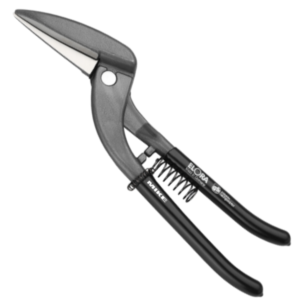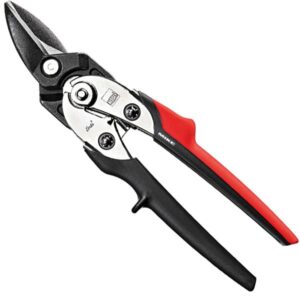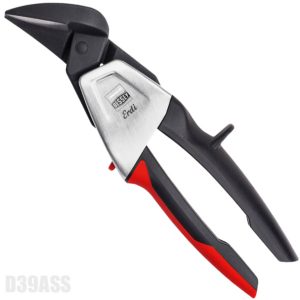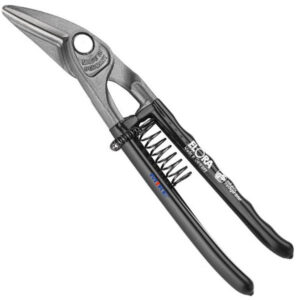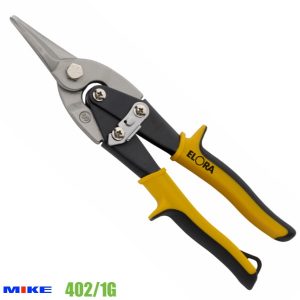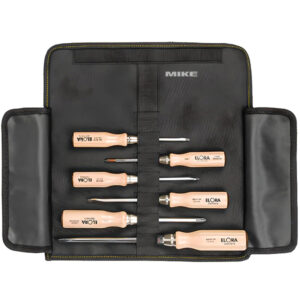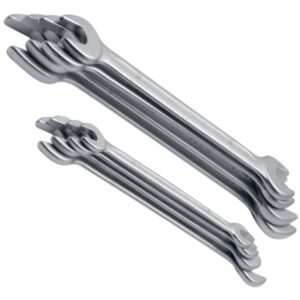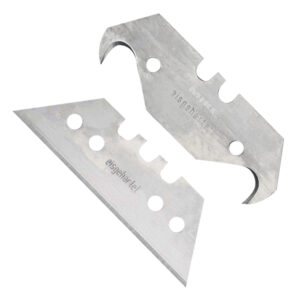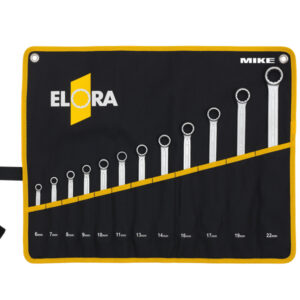A tin snip, also known as tin shears or aviation snips, is a hand tool used for cutting sheet metal, aluminum, and other thin materials. It typically has a pair of sharp, serrated blades that are designed to make clean cuts through metal with minimal distortion or burrs. Tin snips come in different shapes and sizes, with varying cutting capacities and blade orientations. Some common types include straight-cut, left-cut, and right-cut snips, which are designed for cutting in different directions. Tin snips are widely used in various industries, including construction, metalworking, and automotive repair.
What is a tin snip?
Tin snips are often used in situations where a power tool would be impractical or inefficient, such as cutting irregular shapes or making small cuts in hard-to-reach areas. They are also useful for cutting softer materials like plastic, rubber, and cardboard. Tin snips can be operated with one hand, and they are relatively easy to use, making them a popular choice for DIY enthusiasts and hobbyists.
When using tin snips, it’s important to choose the right type of snips for the job and to use them with care to avoid injury. It’s also important to wear appropriate personal protective equipment, such as safety glasses and gloves, to protect yourself from sharp metal edges and flying debris. With proper use and maintenance, tin snips can be a valuable tool for a variety of metalworking applications.
In addition to their primary use for cutting sheet metal, tin snips can also be used for other tasks such as trimming wire, cutting plastic or vinyl siding, and even cutting through thin branches or small wires. They are also commonly used in the HVAC (heating, ventilation, and air conditioning) industry for cutting ductwork and other types of metal components.
Tin snips come in various shapes and sizes, with different blade orientations and cutting capacities. Straight-cut snips are the most common type and are used for making straight cuts. Left-cut and right-cut snips are designed for cutting in a particular direction, while offset snips have angled blades that allow the user to keep their hands above the material being cut. There are also compound snips, which have two pivot points that enable them to make tighter curves and more intricate cuts.
To use tin snips, the user typically grips the handles with one hand and applies pressure to the material being cut with the other hand. The blades are then moved along the cutting line, gradually severing the material. It’s important to keep the blades clean and sharp to ensure clean cuts and to avoid damaging the tool or the material being cut.
How to choose a tin snip?
Choosing the right tin snip depends on the type of material you will be cutting and the specific cutting task you need to accomplish. Here are some factors to consider when selecting a tin snip:
- Cutting capacity: Look for a snip with a cutting capacity that matches the thickness of the material you will be cutting. Most tin snips are rated for a maximum cutting capacity, which can range from 18-gauge to 26-gauge sheet metal.
- Blade orientation: Consider the direction in which you will be cutting. Straight-cut snips are best for making straight cuts, while left-cut and right-cut snips are designed for cutting in a particular direction. Offset snips have angled blades that allow the user to keep their hands above the material being cut.
- Blade type: Tin snips can have straight, serrated, or smooth blades. Serrated blades are best for cutting thicker and harder materials, while smooth blades are better for cutting softer materials like plastic or vinyl.
- Handle comfort: Look for a snip with comfortable grips that fit well in your hands. Some snips have ergonomic handles that reduce fatigue and provide better control.
- Durability: Consider the durability of the snip, especially if you will be using it frequently. Look for snips made from high-quality materials that can withstand heavy use.
- Brand reputation: Finally, consider the reputation of the brand and read reviews from other users to make sure you are getting a high-quality product.
By considering these factors, you can choose a tin snip that is best suited for your specific needs and will provide you with clean, precise cuts for years to come.
What is about ELORA and BESSEY ‘s tin snip?
BESSEY is a well-known manufacturer of high-quality tools and equipment, and they offer a variety of tin snips that are popular among professionals and DIY enthusiasts alike. Here are some of the features of BESSEY’s tin snips:
- Precision-ground blades: BESSEY’s tin snips feature precision-ground blades that are designed to make clean, precise cuts with minimal distortion or burrs.
- High-quality materials: ELORA uses high-quality materials in the construction of their tin snips, including hardened steel blades and durable handles.
- Ergonomic design: BESSEY’s tin snips have ergonomic handles that provide a comfortable grip and reduce hand fatigue, making them ideal for extended use.
- Cutting capacities: ELORA’s tin snips come in different cutting capacities to accommodate a variety of materials, from thin sheet metal to thicker materials like aluminum and copper.
- Blade orientation: BESSEY offers straight-cut, left-cut, and right-cut tin snips, as well as offset snips, which have angled blades for greater cutting versatility.
- Durability: ELORA’s tin snips are designed to withstand heavy use and are built to last, making them a reliable choice for professionals and DIY enthusiasts alike.
Overall, BESSEY’s tin snips are a high-quality, durable option for anyone who needs to cut sheet metal or other thin materials. They offer precision cutting and ergonomic design, and their range of cutting capacities and blade orientations make them versatile for a variety of cutting tasks.
Tin snip
Showing all 6 results

